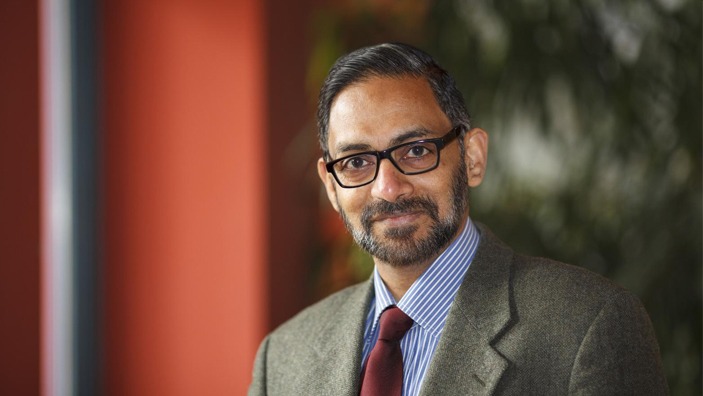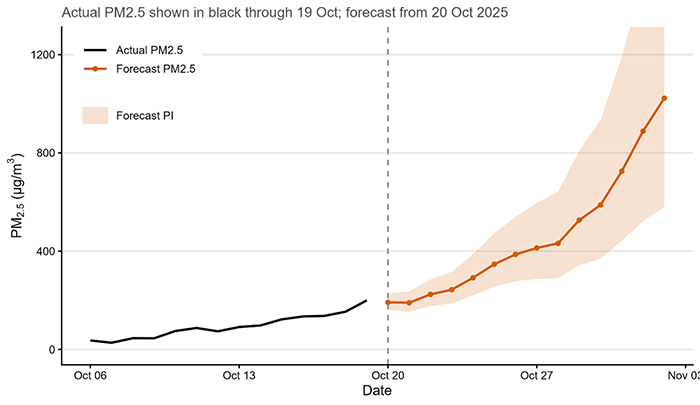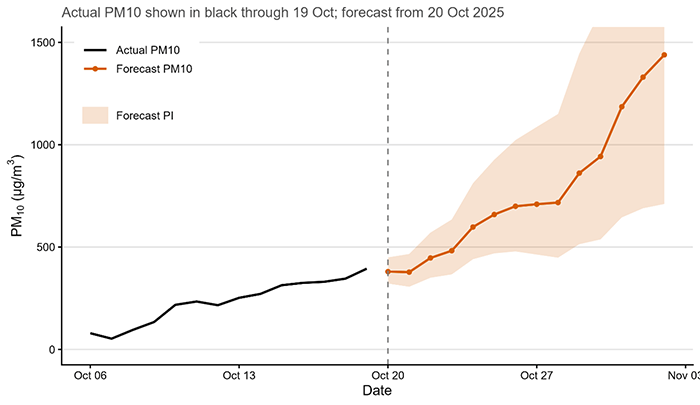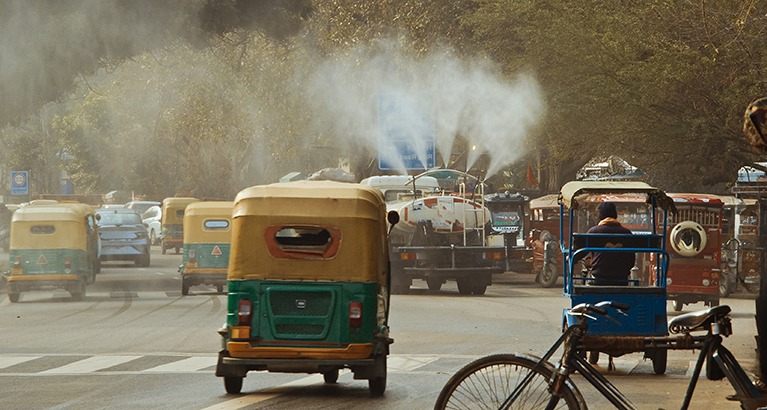
A new weekly forecast model for air pollution in Delhi, a serious problem and health hazard as winter approaches, was launched today (20 October) by academic researchers at Cambridge Judge Business School and the Indian Institute of Technology (IIT) Delhi.
The first weekly Delhi Air Pollution Tracker (CJBS-IIT Delhi) forecast, issued on Diwali Day (the festival of lights) for the fortnight beginning Monday 20 October, forecasts that Delhi’s air quality will deteriorate rapidly in the next 2 weeks “pushing the city into the severe plus category much earlier than in recent years”.
The air pollution forecasting model, which will inform policymakers and individuals about the air pollution problem in the upcoming weeks, is based on a successful forecasting model for the spread of the COVID-19 virus issued by Cambridge Judge in 2021. The forecasts are based on a structural time series model outlined in a research paper published in Harvard Data Science Review.
Adapting COVID model to air pollution
“We have been working for some time to adapt the model developed during the pandemic to apply to the serious air pollution problem in Delhi, which is acute right now as winter sets in and poses a serious public health concern,” says Paul Kattuman, Professor of Economics at Cambridge Judge Business School who developed the new air pollution forecasts with researchers at the Department of Chemical Engineering at IIT Delhi. “This time in late October and November is particularly serious, so we plan to issue these weekly forecasts throughout this period.”
The increase in air pollution in Delhi this time of year reflects several factors including crop-burning in nearby Indian states as farmers prepare fields for the next sowing season, lower wind speeds and cooler temperatures that traps pollutants near the surface, and the additional emissions associated with fireworks during festive celebrations.
2025 trajectory suggests accumulation of particulates
The Executive Summary of the first weekly forecast of 2025 says:
“The 2025 Diwali forecasts show Delhi’s air quality deteriorating sharply in the fortnight following the festival. Model projections indicate that PM2.5 concentrations could rise rapidly from 20 October, pushing the city into the severe plus category much earlier than in recent years. In contrast to 2023 and 2024 – when post-Diwali pollution stabilised – the 2025 trajectory suggests sustained accumulation of particulates from stagnant weather and crop-burning emissions. The forecasts highlight the need for early escalation of mitigation measures and public-health preparedness. Any downward deviation, driven by effective interventions or cleansing rain, would be a welcome sign of successful mitigation.”
In the following graphics, PM2.5 and PM10 refer to fine and coarse particulate matter – tiny airborne particles smaller than 2.5 and 10 micrometres respectively – that indicate air pollution levels and pose health risks because they can penetrate deep into the lungs and bloodstream.


Related content
Kattuman, P., Singh, V., Jain, S., Shaikh, A. and Harvey, A. (2025) Delhi air pollution tracker, 20 October 2025. Cambridge Judge Business School and the Indian Institute of Technology Delhi (Chemical Engineering Department).
Harvey, A. and Kattuman, P. (2020) “Time series models based on growth curves with applications to forecasting Coronavirus.” Harvard Data Science Review, Special Issue 1 (DOI: 10.1162/99608f92.828f40de)





